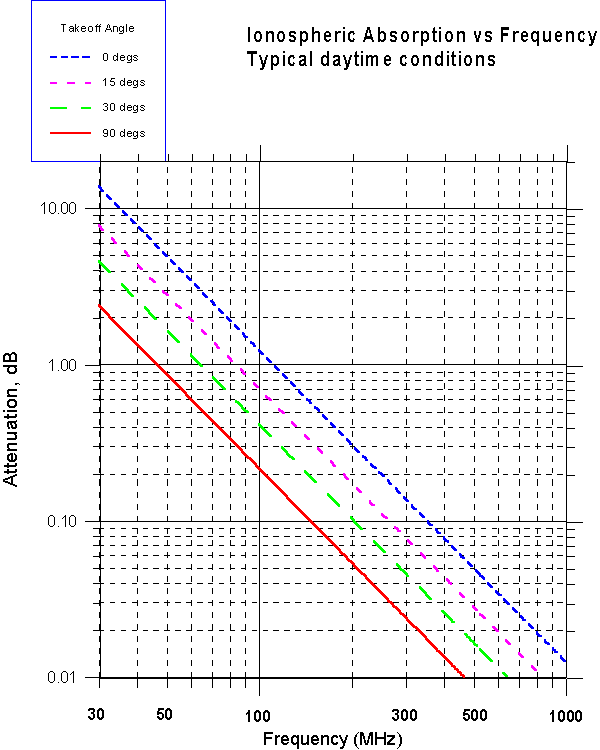![]()
Darrel Emerson, June 1 1998
The following equation gives the value of "typical" daytime attenuation in passage through the ionosphere. It is taken from Radio Wave Propagation by Lucien Boithias, published by North Oxford Academic. The attenuation is in dB, and as seen decreases as the square of frequency f. The attenuation depends on the slant distance through the ionosphere, which is mainly a function of takeoff angle from the earth's surface. The slant distance is a weak function of the assumed height h of the absorbing ionospheric layer and of the earth radius R, because of the earth's curvature. Strictly this relation is only valid for frequencies higher than about 50 MHz.
The height h of the absorbing layer is assumed to be 100 km
![]()
![]()
The attenuation A in dB, as a function of frequency f (MHz) and of takeoff angle phi, is then given by:

The attenuation according to this relation is plotted here for frequencies from 30 MHz to about 1000 MHz, for takeoff angles of 0, 15, 30 and 90 degrees.

The above equation and plot are for typical daytime conditions. During night-time hours, typical attenuations are a factor of 10 to 30 lower.
I thank John Regnault, G4SWX, for drawing the above reference on Radio Wave Propagation to my attention.